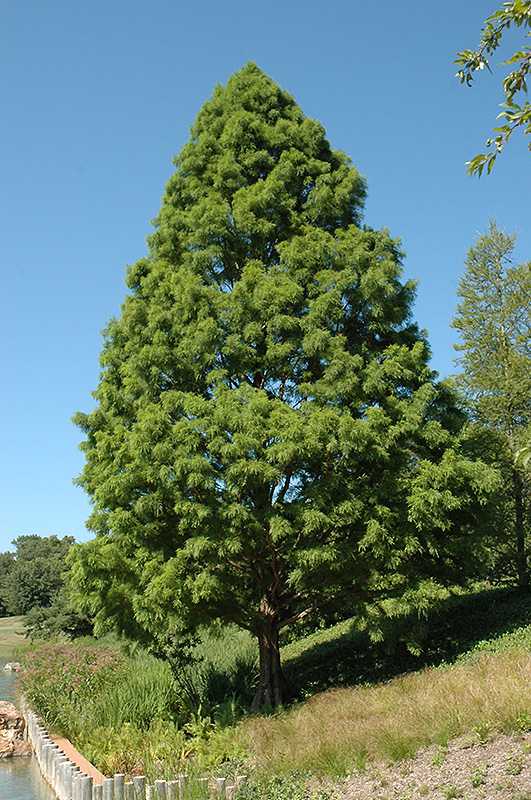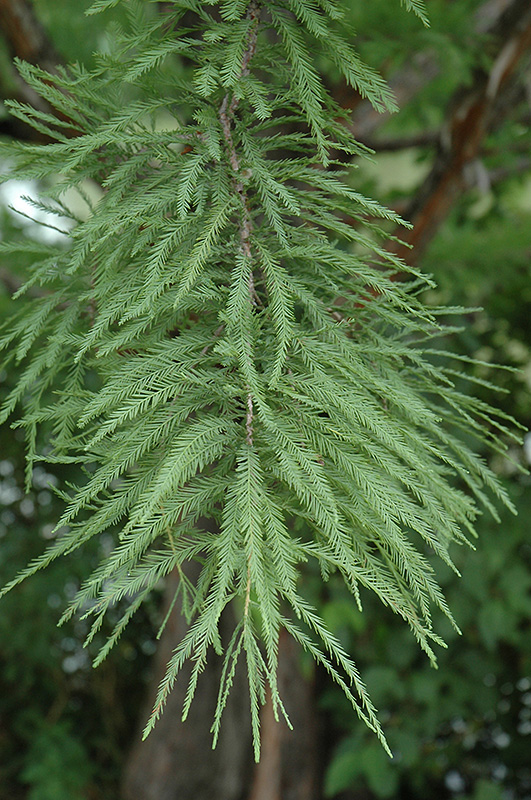Bald Cypress, Shawnee Brave Taxodium distichum 'Shawnee Brave' Height: 55 feet Spread: 20 feet
Sunlight:
Hardiness Zone: 5a Description: A tall, narrowly pyramidal deciduous conifer characteristic of the South but actually quite hardy; narrow bright green leaves turn golden brown in fall before dropping, a broad trunk and odd knees at the base when grown in standing water; very adaptable Ornamental Features Bald Cypress, Shawnee Brave is primarily valued in the landscape for its rigidly columnar form. It has emerald green deciduous foliage. The ferny bipinnately compound leaves turn an outstanding orange in the fall. However, the fruit can be messy in the landscape and may require occasional clean-up. The shaggy antique red bark adds an interesting dimension to the landscape. Landscape Attributes Bald Cypress, Shawnee Brave is a deciduous tree with a strong central leader and a narrowly upright and columnar growth habit. It lends an extremely fine and delicate texture to the landscape composition which can make it a great accent feature on this basis alone. This is a relatively low maintenance tree, and is best pruned in late winter once the threat of extreme cold has passed. It is a good choice for attracting birds and squirrels to your yard, but is not particularly attractive to deer who tend to leave it alone in favor of tastier treats. It has no significant negative characteristics. Bald Cypress, Shawnee Brave is recommended for the following landscape applications; Planting & Growing Bald Cypress, Shawnee Brave will grow to be about 55 feet tall at maturity, with a spread of 20 feet. It has a high canopy of foliage that sits well above the ground, and should not be planted underneath power lines. As it matures, the lower branches of this tree can be strategically removed to create a high enough canopy to support unobstructed human traffic underneath. It grows at a medium rate, and under ideal conditions can be expected to live for 80 years or more. This tree does best in full sun to partial shade. It is an amazingly adaptable plant, tolerating both dry conditions and even some standing water. This plant should be periodically fertilized throughout the active growing season with a specially-formulated acidic fertilizer. It is not particular as to soil type or pH. It is somewhat tolerant of urban pollution. This is a selection of a native North American species. Special Attributes Flowers are insignificant. Few to some clusters of 2" round cones appear in summer when the tree gets 8 to 10 years or older and drops in early autumn. Birds and Squirrels eat the nuts. ![]()
![]()
![]()
![]()
![]()
![]()
![]()
![]()
![]()
![]()
![]()
![]()
![]()
![]()


